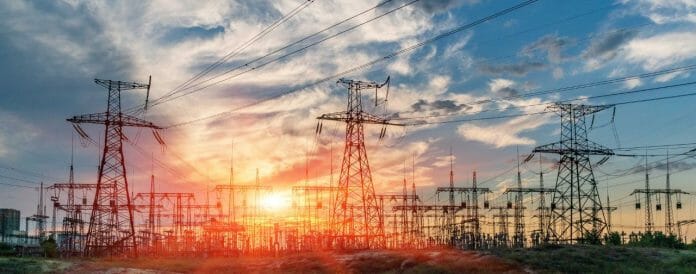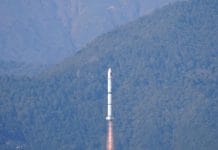There is are expectations for an electricity demand growth rate in Peninsular Malaysia of 1.8% annually in CY23 and CY24, but the growth rate is poised to accelerate in CY25 driven by additional demand from five new data centres.
Also, opportunities are aplenty in the renewable energy (RE) space pursuant to the National Energy Transition Roadmap (NETR) under which the government has set a goal of RE making up 70% of total generation mix by 2050.
Data centres drive electricity demand
Kenanga Investment Bank (Kenanga) projects an annual electricity demand growth rate of 1.8% in Peninsular Malaysia in CY23 and CY24, largely driven by the recovery in the industrial sector, which is slightly higher than the guided growth of 1.7% under the Regulatory Period 3 (RP3) parameter.
However, the number could accelerate under the upcoming Regulatory Period 4 (RP4) over 2025-2027 driven by five new data centres that will come online over the next 12 months. These data centres will consume about 2,000MW of electricity (against TENAGA’s current domestic installed capacity of 18,183MW) on which TENAGA is well-positioned to capitalise on given its reserved margin of 40%.
Also, a higher transmission and distribution capex for the transmission and distribution of RE will increase TENAGA’s regulated asset base (RAB), resulting in higher absolute earnings based on a return pegged to WACC (7.3% WACC for RP3).
Energy transition set in motion
The recently-announced NETR lays down the pathway for Malaysia’s net zero goal by 2050. A key initiative is the transition to RE with a target of RE making up 70% of total generation mix by 2050. To meet the target, Kenanga estimates that at least 20GW of RE will need to be added to the system by 2050, of which >90% is expected to come from solar. Meanwhile, the lifting of the export ban on RE and the establishment of a centralised electricity exchange operated by a single market aggregator to ensure pricing transparency will provide further growth impetus to the local RE sector.
TENAGA will benefit from; (i) RE generation, particularly solar as well as re-powering of Paka and Kapar power plants into hydrogen-fired plants, and (ii) investment in grid infrastructure for the transmission and distribution of RE that fetches a regulated return.
Benign fuel prices positive to TENAGA
TENAGA’s Imbalance Cost Pass-Through (ICPT) receivables fell sharply by 47% to RM8.9b as of Jun 2023, off the peak from the all-time-high of RM16.9b as at Dec 2022. Given the persistent downtrend in the fuel price, TENAGA guided for its ICPT receivable to fall to RM7b in 1HFY24. The shrinking ICPT receivables will result in lower working capital requirements and hence lower interest expenses and better earnings going forward.
Mixed impact on gas utilities
While the movement of gas prices has neutral impact in the longer run given the regulated framework, the current declining gas price trend has a positive impact on PETGAS (MP; TP: RM17.45) in the immediate term as low gas price leads to lower internal gas consumption (input cost) for its regulated business as well as non-regulated utilities segment.
The utilities segment uses gas as fuel to generate and supply power, stream and industries gasses to industries. However, weaker gas prices work against GASMSIA’s (MP; TP: RM3.30) non-regulated retail margin which is calculated based on a fixed percentage on gas selling price. On the other hand, YTLPOWR’s solid earnings from PowerSeraya is expected to be sustained at least in the next 2-3 years underpinned by: (I) favourable retail prices but gas input locked in at low prices (during the early part of the pandemic), and (ii) the absence of major capex.
Weak fuel cost good news for most
Given the declining trend of fuel prices, Kenanga expects earnings of players to end the year on a high note, with the exception of GASMSIA as the weakening of gas price would result in a weaker retail margin as mentioned above. PETGAS should benefit from lower input cost as gas price weakens. Meanwhile, Kenanga raises their FY24-25F earnings for YTLPOWR by 15%-16% to RM2.17b and RM2.06b, respectively, to reflect its sustained low input cost.
In-house risk-free rate assumption cut to 4% from 4.5%. Kenanga accordingly upgrades their TP for YTLPOWR by 17% to RM2.50 (from RM2.14), having also reflected the upwards earnings revisions as mentioned. We also raise TP of TENAGA by 1.3% to RM11.30 (from RM11.15), PETGAS by 1.3% to RM17.45 (from RM17.22), MALAKOF by 1.6% to RM0.63 (from RM0.62) and GASMSIA by 0.9% to RM3.30 (from RM3.27).
Kenanga maintains an OVERWEIGHT rating on the utilities sector and continue to like the sector for its earnings defensiveness, particularly due to their regulated asset base model, and hence recurring decent dividend yield of 4%-6% for yield seekers. Sector top picks include:
• TENAGA for: (i) its dominance in power generation, transmission and distribution in Malaysia, (ii) its defensive earnings backed a resilient domestic economy and assets that are largely regulated, and (iii) its heavyweight index-linked stock status.
• YTLPOWR for: (i) the robust near-term earnings prospects of PowerSeraya, and (ii) its longer-term growth prospects driven by its data centre and digital banking ventures.









